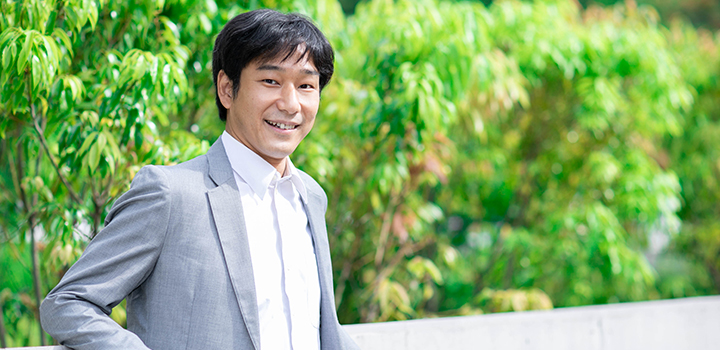Hiroshi Ban

Main Lab Location:
CiNet (Main bldg.)Mailing Address:
1-4 Yamadaoka, Suita City, Osaka, 565-0871, JapanEmail:
ban.hiroshi at nict.go.jpMy research focuses on human visual object perception and recognition. Specifically, using human neuroimaging techniques such as functional MRI, I am now investigating how 2D retinal inputs are translated into 3D depth structures, how local image features are integrated into a coherent visual object, how multiple and different visual clues are integrated, and how fragmental and incomplete visual inputs are compensated into a whole.
A fundamental challenge in visual neuroscience/psychology is to understand the processes by which the outputs of neurons with spatially limited receptive fields are progressively transformed to encode information about objects at more extensive scales. Although our visual system tends to be often explained as an analogy of camera and photographs, our visual system actually has more capabilities to solve remarkably complicated problems that are far beyond the standard camera does. Therefore, to answer the questions above is very important not only to accumulate our basic knowledge in the neuroscience and psychology fields, but also to develop novel frameworks towards the future ICTs (Information and Communications Technologies).
Recently, we have been further investigating human visual perception and cognitive functions when participants are viewing 3D images/movies in more natural (but complicated), and wide-field stereoscopic environments using the state-of-the-art VR (Virtual Reality) technologies. We have been also developing the related programs for these measurements by ourselves. Using such new devices and programs, for instance, we are trying to elucidate what cues are at least required for humans to feel a sense of “presence”, “immersion”, and “stereoscopic effect.” An old psychology paper once reported that it was only after color TV became popular that dreams, which used to be in black and white, became colored. It may (or would) be exactly right now that the advent of VR technology is changing the very shape of dreams again. Shall we join together in pursuing these latest technologies and the new research environments they bring?
Our group is always looking for undergraduate/graduate students and post-doctoral researchers who are interested in our research topics. Please feel free to contact us. Let’s do interesting collaborative studies together. Even if you just want to visit us like a “sightseeing”, you are more than welcome!
Selected Publications:
Chang, D.H.F., Troje, N.F., Ikegaya, Y., Fujita, I., Ban, H. (2021).
Spatiotemporal dynamics of responses to biological motion in the human brain. Cortex. 136, 124-139.
Armendariz, M., Ban, H., Welchman, A.E., Vanduffel, W. (2019).
Areal differences in depth cue integration between monkey and human. PLOS Biology, 17(3): e2006405.
Dekker, T., Ban, H., van der Velde, B., Sereno, M.I., Welchman, A.E., Narandini, M., (2015).
Late development of cue integration is linked to sensory fusion in cortex. Current Biology, 25(21), 2856–2861.
Funayama, K., Minamisawa, G., Matsumoto, N., Ban, H., Chan, A.W., Matsuki, N., Murphy, T.H., Ikegaya, Y. (2015).
Neocortical rebound depolarization enhances visual perception. PLOS Biology, 13(8): e1002231. Doi:10.1371/journal.pbio.1002231.
Ban, H., & Yamamoto, H. (2013).
A non-device-specific approach to display characterization based on linear, non-linear, and hybrid search algorithms. Journal of vision, 13(6):20, 1–26.
Ban, H., Preston, T.J., Meeson, A., Welchman, A.E. (2012).
The integration of motion and disparity cues to depth in the dorsal visual cortex. Nature Neuroscience, 15(4): 636-643.
The contents in of the publication was highlighted in “NEWS & VIEWS” in Nature Neuroscience 15(4)
Software and analysis tools developed/released in the past (including ones released before I started to work here) :
https://github.com/hiroshiban
Short Biography:
<Brief Biography>
2021 Senior Researcher, NICT, CiNet Japan
2013 Guest Associate Professor, Graduate School of Frontier Biosciences, Osaka University, Japan
2013 Researcher, NICT, CiNet Japan
2010-2013 JSPS Research Fellow to Study Abroad, School of Psychology, University of Birmingham, UK (Dr Zoe Kourtzi and Dr Andrew Welchman)
2009-2010 Post-doctoral Researcher, School of Psychology, University of Birmingham, UK (Dr Zoe Kourtzi and Dr Andrew Welchman)
2007-2009 Assistant Professor, Kokoro Research Center, Kyoto University, Japan
<Awards>
2021 NICT In-house Award (as a member of the team to promote external/corporate collaborations)
2020 HKU Social Sciences Outstanding Research Output Award (Basic Research) 2018-2019 (Hong-Kong, collaboration)
2018 Poster Presentation Award, Social and Affective Neuroscience Society 2018 (collaboration)
2017 Best Presentation Award, Human Neuroimaging Workshop (collaboration)
2017 Travel Award (Vision Science Society, Annual Conference, 2017) (collaboration)
2016 NICT In-house Award (as a member of the team to promote internationalization)
2014 NICT Kansai 3 sites Joint Research Meeting, Research Encouragement Award (first presenter)
2011 Travel Award (Vision Science Society, Annual Conference, 2011) (collaboration)
2007 Best Presentation Award, Japan Vision Science Society (first presenter)
2006 Human Communication Award, The Institute of Electronics, Information and Communication Engineers, Japan (first presenter)
2004 Human Communication Award, The Institute of Electronics, Information and Communication Engineers, Japan (first presenter)
Lab Members:
Researcher
・Taiki Orima
Research Assistant
・Naomi Murakami
・Miho Hayashi
Student
・Ayu Tomohisa
・Aoi Kumadaki
